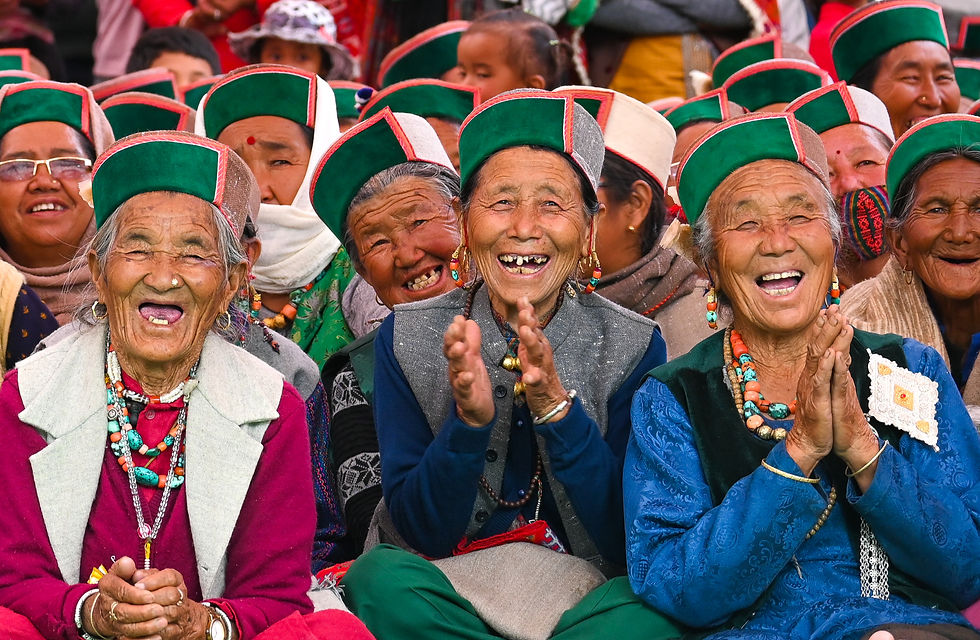Life in Kinnaur
- Nyidon Tenzin

- Jul 16, 2024
- 3 min read

Kinnaur, described as a fairytale land and land of wonders, is a green valley of apple orchards, snow-capped mountains, and cold desert terrains. It is the border district on the ancient India-Tibet trade route. The whole district has been divided into three administrative regions: Pooh, Kalpa, and Nichar. Satluj, Baspa, and Spiti rivers flow through Kinnaur, enhancing its beauty. Two religions, Buddhism and Hinduism coexist in harmony here, lower Kinnaur has the larger influence of Hinduism with a hint of Buddhism whereas Buddhism largely dominates upper Kinnaur. Locals communicate in Kinnauri, the local dialect but Hindi is widely spoken and understood. Very little is known about the history of Kinnaur; however, there are many legends and myths among the residents.
The climate of Kinnaur is one to charm anybody; it decides much about routines and traditions in its daily routine, from the choice of wardrobe. Kinnaur usually has pleasant weather throughout the year, locals typically wear light woollen clothing during summers, while heavy woollens become necessary in the winter due to snowfall. Houses generally are constructed from mud and wood. This traditional building method helps in maintaining a comfortable indoor temperature, which keeps homes warm during snowy winters and cool in the summer. But with the influence of modernity, they have also started cemented house construction. A lot of them keep cattle like cows and goats which are used to smear floors with cow dung because it is believed to be auspicious and has its practical advantages. Kansa utensils are widely used as they consist of 78% copper and 22% tin, which has many health benefits. They have a traditional dress, too—grey woollen caps with a green band and red borders, very own and peculiar to the people of Upper Kinnaur. Besides, the local people wear woollen shawls that exhibit authentic and intricate designs, which speak much about their valuable cultural heritage. In addition, farming used to be the major occupation for Kinnaur, which is still largely is. The people in the present era are found to have diversified into different jobs, but they still feel a strong bond with their roots and traditional modes of life. This community has not let its cultural heritage fade away even after getting diversified into modern professions.

Orchards are usually full of apple, almond, rajma, and chilgoza trees. Among these, apples are the major crops. Plantation time for them is from June to October, and they require good care and nurturing throughout the year for a nice harvest. The amount of attention given to apple orchards symbolizes just how important this fruit is to the economy and culture of the people here. Another major crop is the rajma, which is sown in the first week of May and harvested in late August. Besides this, the locals produce and sell oils, especially from almonds, which add greatly to their economic prospects. The people of Upper Kinnaur celebrate the Tibetan New Year, called Losar, together every year, around December or January. This is one of the most imperative cultural festivals celebrated by this community; it marks the beginning of a new lunar year. The festival is characterized by various traditional rituals and communal feasts. Houses are cleaned in preparation for the New Year, while special dishes, like "Guma," a type of sausage delicacy, are prepared—people also wear their finest traditional clothes. Married women offer garlands of pine nuts, apples, or money to their brothers and express their love by wishing them good. The whole village dances to the traditional beats in the evening and rejoices till night with immense joy and friendliness. This yearly practice shows how rich is the cultural heritage of Kinnaur and the Tibetan way of life that is deeply imprinted in their blood.
In conclusion, regardless of the challenges and changes that have occurred over time, Kinnauris live a peaceful and fulfilling life, deeply rooted in their culture. With a very strong sense of community and connection, they live happily in their unique way of life.



Comments